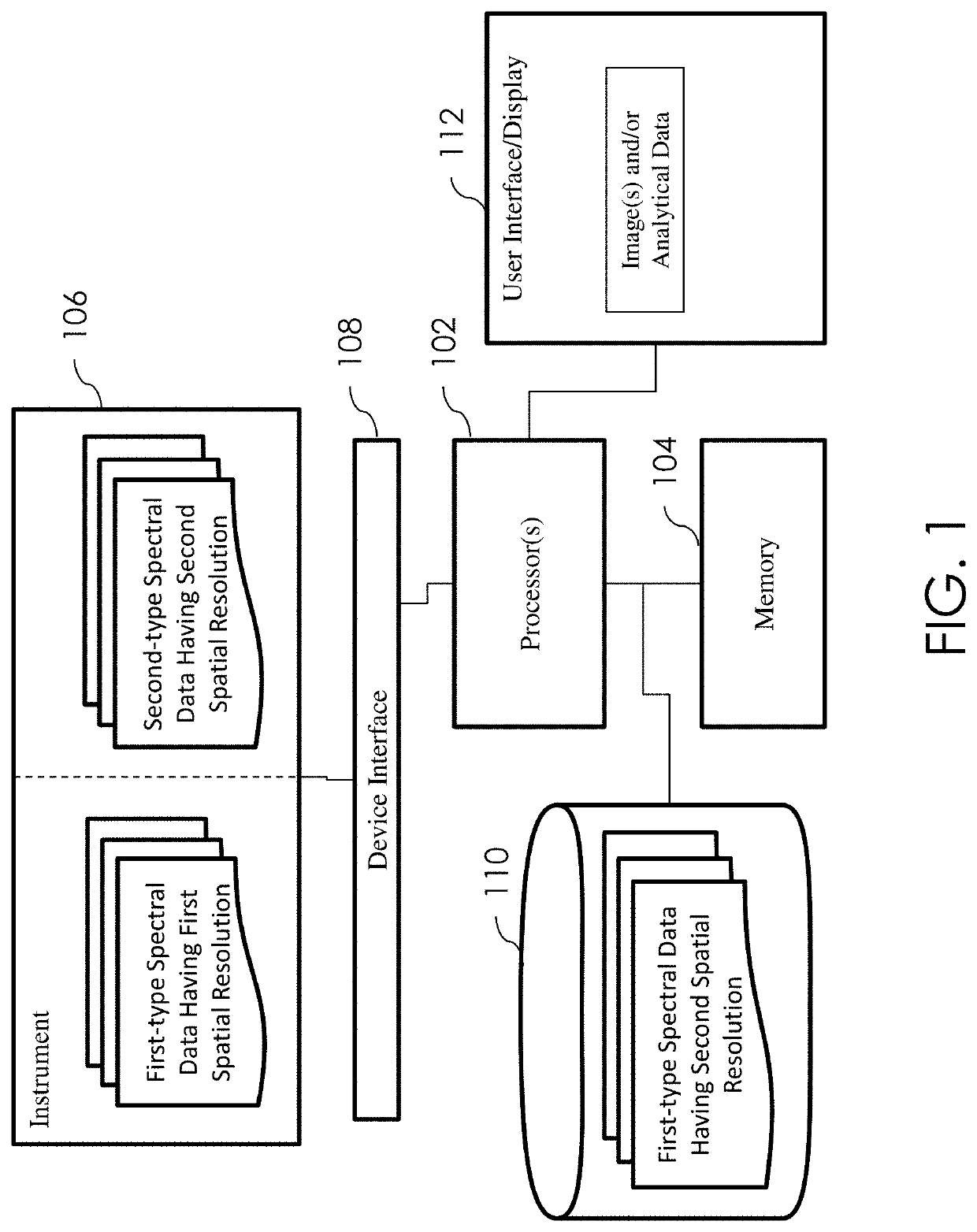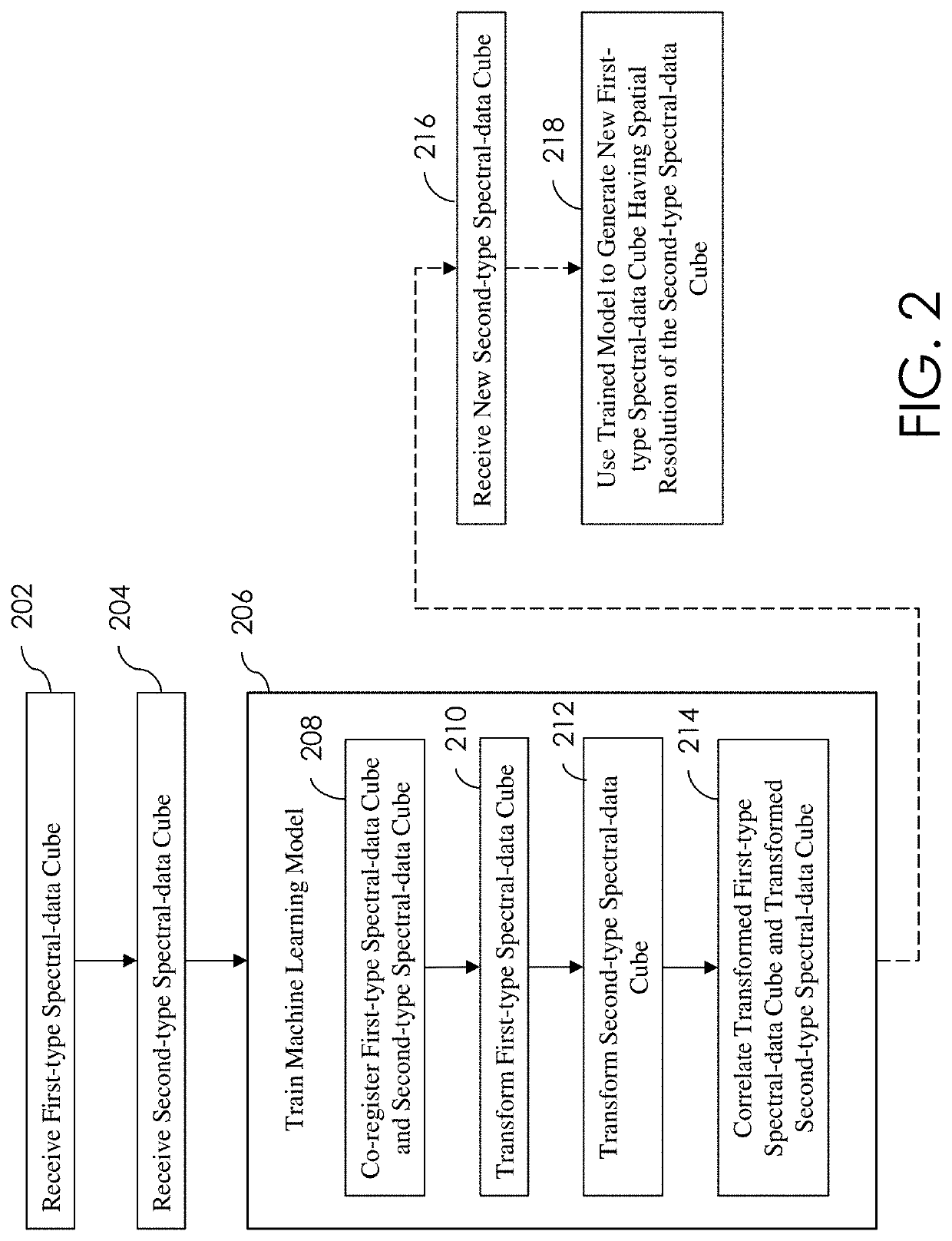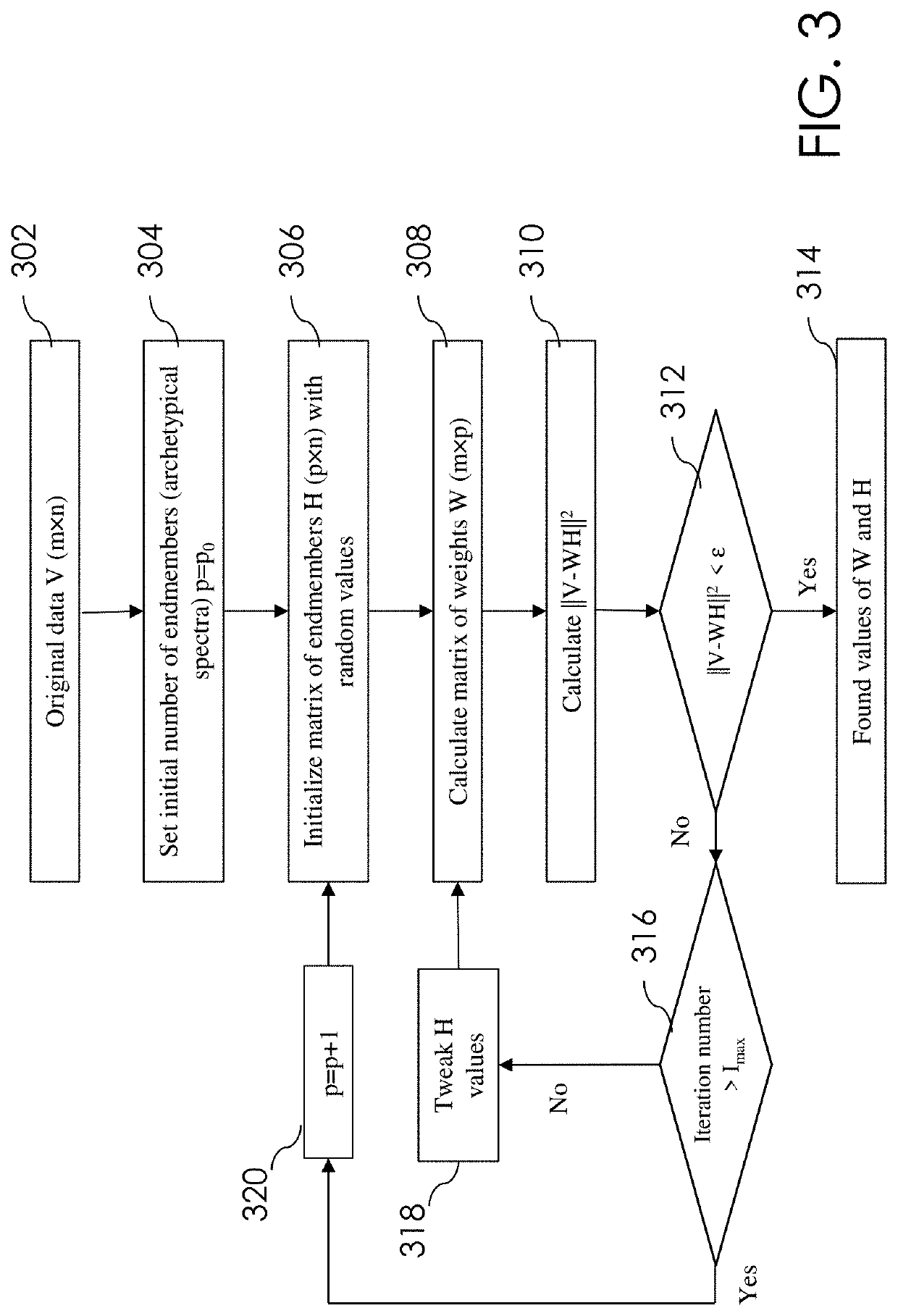Correlative multimodal chemical imaging via machine learning
a chemical imaging and machine learning technology, applied in chemical machine learning, chemical imaging, instruments, etc., can solve the problems of inability to achieve the high spatial resolution, inability to directly measure at high spatial resolution, and difficulty in achieving the necessary high spatial resolution
- Summary
- Abstract
- Description
- Claims
- Application Information
AI Technical Summary
Benefits of technology
Problems solved by technology
Method used
Image
Examples
Embodiment Construction
[0019]Machine learning systems and methods are disclosed, which can infer high-spatial resolution molecular or component spectra. A machine learning approach in an embodiment combines images from two mass spectrometry imaging (MSI) techniques providing different information, to predict molecular MSI spectra with high spatial resolution, e.g., submicron spatial resolution.
[0020]An example of one MSI technique, which a methodology disclosed herein combines, provides low spatial resolution but intact molecular spectra and an example of another MSI technique, which the methodology disclosed herein combines, provides nanometer spatial resolution but fragmented molecular signatures. The machine learning approach in an embodiment can incorporate known relations between the two, which produce different information about the chemical composition of the sample due to the difference in physical nature of the imaging methods. For example, the machine learning approach can provide for the automa...
PUM
| Property | Measurement | Unit |
|---|---|---|
| ToF- | aaaaa | aaaaa |
| weights | aaaaa | aaaaa |
| spatial dimensions | aaaaa | aaaaa |
Abstract
Description
Claims
Application Information
 Login to View More
Login to View More - R&D
- Intellectual Property
- Life Sciences
- Materials
- Tech Scout
- Unparalleled Data Quality
- Higher Quality Content
- 60% Fewer Hallucinations
Browse by: Latest US Patents, China's latest patents, Technical Efficacy Thesaurus, Application Domain, Technology Topic, Popular Technical Reports.
© 2025 PatSnap. All rights reserved.Legal|Privacy policy|Modern Slavery Act Transparency Statement|Sitemap|About US| Contact US: help@patsnap.com



